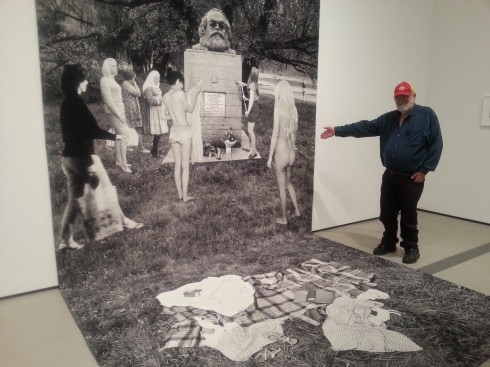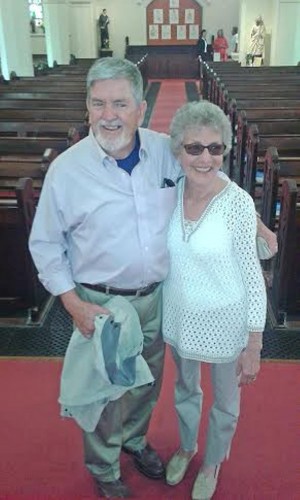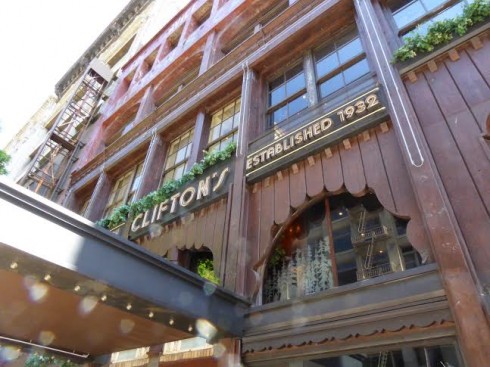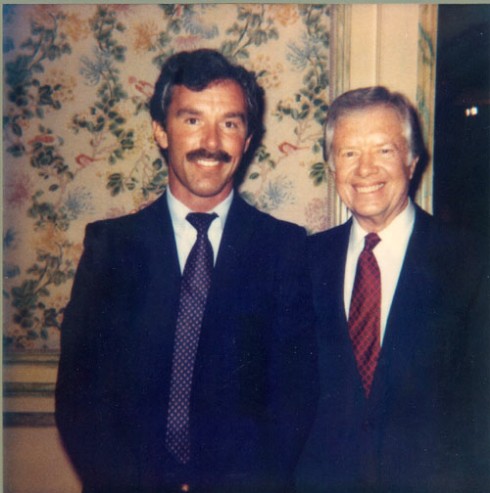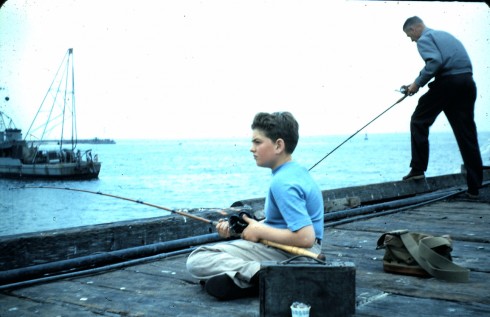AN UNUSUAL BOHEMIA IN SOUTHERN CALIFORNIA
By LIONEL ROLFE
There are some who would say that Bohemia is a state of mind, but they should add it also has to have a particular time and place. In the case of this book, the time and place is the southern half of the Golden State over the last century or so, and the state of mind is Bohemia—in all its many multitudinous variations. The book almost makes you believe that the true home of Bohemia was not, as so many thought, the left bank of Paris or the coffeehouses of San Francisco that Mark Twain and Herman Melville frequented during the Gold Rush, but Los Angeles and environs.
True, the counter culture was created in Los Angeles, and it was a distillation of bohemianism. A couple of things document this—the Renaissance Pleasure Faire, which still goes on since. It was created in 1963. The “Los Angeles Free Press” went into business about the same time—and it had a definite impact at the time. It was the first and largest of the Underground press of the ‘60s. What its effect is today can be debated forever.
The first faire was in the backyard of a house in Laurel Canyon. The faire was thrown as a promotion for Radio Station KPFK. And Art Kunkin did a prototype “Freep” to promote the faire and station.
The first faire’s organizers were Ron and Phyllis Patterson. Kunkin threw in his lot with them and thus did both faire and paper become pillars of the counter culture community. The counter culture was defined mostly by its support of civil rights and it opposition to the Vietnam War. Read more
Can the Broad Museum Threaten the Tate Modern?
BY LIONEL ROLFE
I have to admit that as a partisan of so-called “classical music” and great writing as summed up by the likes of Mark Twain and Beethoven, I’ve never been particularly impressed by modern art or grants-supported “serious music,” forms of art mostly appreciated by the academic world.
When my friend Anthea Raymond, the famed broadcaster (she ran KPCC for a while) and editor, invited me to see the Broad Museum on Grand Avenue in downtown Los Angeles with her, she was expecting to see my antediluvian ways.
Raymond surely wanted to introduce me to the Broad Museum even before I had my “minor stroke.” I assured her I was coming, despite the weakness and pain. I was curious if the Broad could at all compare to the Tate Modern I saw in London right after the Millennia. Read more
YOU CAN GO HOME AGAIN
Michael and Sue Harrison return to Birmingham, England
By Michael Harrison
Gertrude Stein once famously described her childhood home of Oakland by saying “there is no ‘there, there’,” but our family certainly did not find that to be the case in returning to our native Birmingham, England last month.
My wife Sue and I decided to celebrate our 50th Anniversary in the church where we were married at Erdington Abbey in Birmingham. The trip represented the first time that we would be in England with all three of our sons at the same time. Our eldest son Sean brought along his girlfriend Jeanine, while Ian was accompanied by his eight year-old daughter Isabel (Izzy). Youngest son Neil was there with his nine-year old daughter Ava.
Unfortunately, a goodly number of those that had attended the wedding a half-century earlier are sadly, no longer with us. Both sets of parents are gone, some siblings as well, but a sister, numerous nephews and nieces, and their attendant offspring are still living there. We felt there were several family members who would be joining us in the celebration of our 50-year odyssey. So off we set on our search for Stein’s elusive “there, there.” Read more
Drastic Flaws Revealed in City and State Oversight of Urban Oil Drill Sites
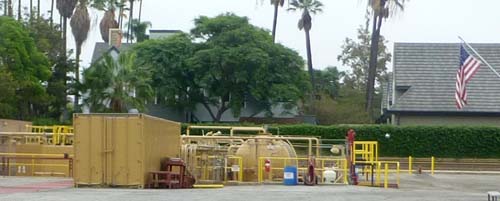
AllenCo Energy oil drill site in West Adams’ University Park neighborhod. Closed since September 2013, the company is asking to resume pumping oil. Note the immediate proximity of residential housing just over the drill site’s back wall. Hundreds of people were sickened before the operation shut down.
Leslie Evans
The AllenCo Energy company, whose 21-well urban oil field at 814 W. 23rd Street in the University Park neighborhood just north of USC sickened hundreds of people from uncontrolled fumes, is now pressing to resume drilling operations, shut down since November 2013. This has brought some serious media attention, revealing a shocking systemic failure of both Los Angeles and California state oversight of such urban oil operations.
The state’s regulatory agency, the Division of Oil, Gas and Geothermal Resources (DOGGR), under pressure for failing to turn in reports for several years, released an audit of its work on October 8. This revealed that the agency has not conducted its required annual review of “most oil projects” in the Los Angeles area since 2007. The L.A. Times summarized: Read more
RENOVATED CLIFTON’S INTRODUCES CAFETERIA NOIR
By Bob Vickrey
Remember that disorienting feeling as a kid when you came out of a dark movie theater after the Saturday matinee and made the difficult adjustment to the harsh afternoon sunlight?
That was the same bewildering feeling our monthly lunch group had recently as we emerged from the dark labyrinth of mysterious corridors in the newly refurbished Clifton’s Cafeteria in downtown Los Angeles.
If there is such a thing as cafeteria noir, the owners have certainly succeeded in creating the definitive dream-like dining experience. Surely, surrealistic filmmaker David Lynch had some input into the set decoration here. And I’m guessing the ghost of Vincent Price provided the inspiration for the eerie lighting throughout the place. Read more
Los Angeles’s Homeless Emergency
Leslie Evans
The spread of homeless camps outward from Downtown Skid Row into every neighborhood spurred seven L.A. City Council members and Mayor Eric Garcetti on September 22 to declare homelessness a city emergency and promise to raise $100 million to ameliorate it. There is a long unhappy back story here. The city for decades has tried to nickel and dime its way out of the homeless morass. It has put what money it has allocated for this problem overwhelmingly into police and Department of Sanitation cleanups of homeless camps, spending $100 million in 2014, of which 67% went to these services, which took no one off the streets.
Shocked by Los Angeles Homeless Services Authority (LAHSA) numbers from its January 2015 point-in-time count, the city found that it had 26,000 homeless people within its borders, 12% more than in 2013, but with an astounding 84% growth in the number of street camps and people living in vehicles. Read more
JEREMY TARCHER: WEST COAST PUBLISHING LEGEND
Publisher Jeremy Tarcher (photo Ken Hively/LA Times). This photo best summed up Jeremy’s image
By Bob Vickrey
There was a pronounced cadence and deliberate pacing to his speech pattern. He always spoke very pre-cise-ly while utilizing perfect enunciation of each word. Many of us who worked with Jeremy Tarcher in the book publishing business were completely captivated by his style and extraordinary elegance.
That distinctive voice was silenced on September 20th when he died at his home in Los Angeles from complications of Parkinson’s disease at the age of 83.
Jeremy P. Tarcher carved out a publishing niche for himself more than 40 years ago, and helped usher in a movement that spread across the country in decades to follow. His books on creativity, psychology, spirituality, and social consciousness made significant contributions in a field that came to be known as the “human potential movement.”
He had come from a show business background before he founded his publishing house, which was located in the heart of the Sunset Strip only a few blocks from Tower Records, Spago, and Book Soup. Jeremy P. Tarcher Books effectively revolutionized West Coast publishing by offering books focused on the mind, body, and spirit. Read more
KEEPING UP WITH JIMMY CARTER ON THE BOOK TOUR
Bob Vickrey and President Jimmy Carter at the Beverly Wilshire Hotel, March 1985
By Bob Vickrey
While watching former President Jimmy Carter describe the details of his recent cancer diagnosis during a televised news conference, it occurred to me that anyone who had ever met him in person was not surprised by the gracious manner in which he was now confronting his own mortality. That congenial style has long been his trademark.
His tireless energy has been on display since he left the White House 35 years ago—even now at the age of ninety. His commitment to international humanitarian work has been well documented, particularly for his beloved project, Habitat for Humanity
The familiar smile he flashed often during the press conference took me back to a time in March of 1985, when I stood on the steps of the Beverly Wilshire Hotel anxiously awaiting his arrival. I was to escort him during his Southern California stop on his national book tour. Read more
There Goes the Robert E. Lee
By Paul Morantz
Like my father before me, I will work the land,
And like my brother before me, I took a rebel stand.
He was just eighteen, proud and brave,
but a Yankee laid him in his grave.
I swear by the blood below my feet
You can’t raise a Caine back up when he’s in defeat
The night they drove old Dixie down
And all the bells were ringing,…
Guess we won’t be hearing “The Night They Drove Old Dixie Down” on the radio any more.
Why, you ask? Well, doesn’t it refer to a dark time in our history, an era drenched in lynchings, hatred, , the shameful enslavement of a race of people and a bloody and destructive civil war? We certainly wouldn’t want people to remember all that, would we? Better it all be “Gone With the Wind,” right?
That seems to be the logical conclusion to be drawn from the current public outrage over the display of the Confederate flag, sparked by the tragic killing of nine innocents at a black church in Charleston, South Carolina. It was a despicable act, and when the alleged perpetrator was seen on the Internet spouting hateful racist beliefs and proudly clutching the Confederate flag, the resulting public outcry was understandable. Read more
Between Heaven & Hell
The author nearly 70 years ago, when life was still a journey to ponder
By LIONEL ROLFE
It’s an oppressively hot day. It was the first time this summer the temperature had gotten up in to the 90s. That wouldn’t have meant much–after all it’s now August–but for the humidity. Summer usually isn’t humid in Los Angeles. Humidity is mostly alien to Los Angeles. That’s more for Miami or New York or those kinds of places. I don’t know for others, but this kind of weather makes me depressed and hopeless.
I guess I’m spoiled. The air conditioning in my 20-year-old Toyota is broken. So I don’t go out much more than I absolutely have to. But as I pamper myself, I feel guilty. Like everyone else, I’ve seen those pictures of families from Africa and the Middle East, often children and young mothers, stranded on old rust buckets in the Mediterranean, crying from hunger, thirst and fear. Read more

